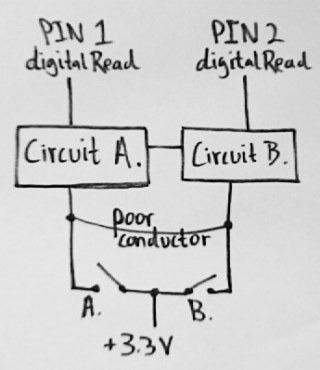reginalStetson
Active member

Abstract: if switch "A" is on and switch "B" is off, a current of +3.3V would reach Circuit A before it reaches Circuit B because of the delay caused by the slowed flow of the +3.3V through the poor conductor. By design, Circuit A would then tell Circuit B to close its gate between its input and PIN2, while circuit A's gate from its input to PIN1 would remain open. In this case, PIN1 would register a HIGH while PIN2 would register a LOW, indicating that switch "A" is on and switch "B" is off.
The objective here is to be able to tell if switch "A" or switch "B" is on in the presence of a poor conductor connecting them. Here, a poor conductor is simply a metal that has measurably less conductivity than that of a normal circuit's.
The feasibility of this design relies on the fact that a poor conductor of electricity slows the flow of current, which would allow Circuit A to tell Circuit B to close its gate before the +3.3V reaches Circuit B.
Does this sound feasible? Is it possible to use the +3.3V entering Circuit A to close the gate in Circuit B faster than the +3.3V signal would be able to reach Circuit B through the poor conductor? How "poor" would the conductivity of the poor conductor have to be to cause a significant enough delay?
Last edited:

